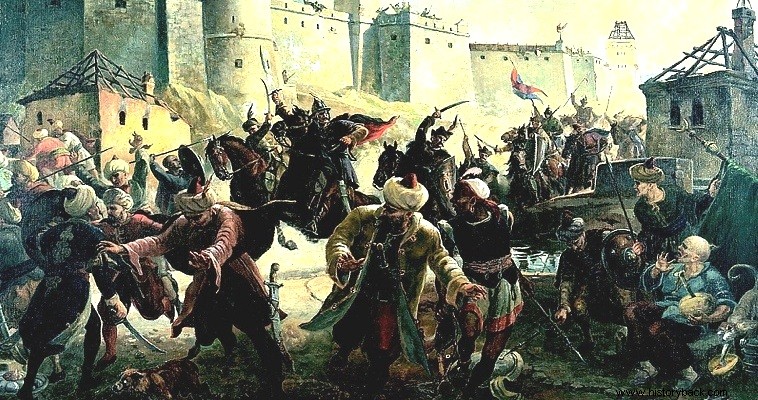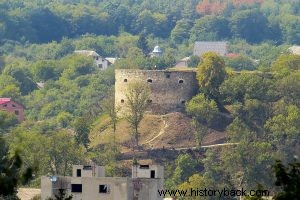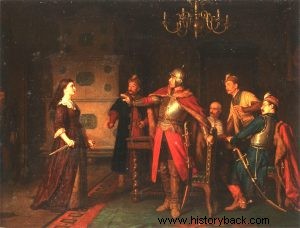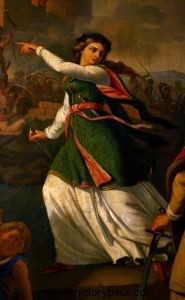
The castle of Trebovla was built in the 14th century. in the valley of the small river Hniezna in today's western Ukraine which in 1675 was part of Poland. The castle was small (100 x 40m) but strongly built with walls up to 4m thick. In 1672 the Polish-Turkish War had broken out. After various exchanges, the Turks had managed to advance to western Ukraine (Podolia).
Few positions in the region remained in the possession of the Poles. One of them was the castle of Trebovla. In the castle there was a small garrison of 80 men, under Captain Ioannis Samuel Hranovski. It also had 11 guns. The captain's wife Anna - Dorothea was also in the castle. When the Turks approached, about 200 inhabitants of the village of the same name and 30 nobles of the area also entered the castle.
In the summer of 1675 a Turkish-Tatar army of 30,000 men had invaded the region and by September 20, 10,000 Turks, under Pasha Ibrahim, the chosen Pachy , they had approached the castle. The situation was critical for the Poles as the ratio was about 1:125 in favor of the Turks. A regiment of dragoons stationed nearby was ordered to withdraw as there was not enough food in the castle and for its men. Thus the captain and his 80 men remained alone.
Confident of their success, the Turks launched their first attack on September 20, but were repulsed with heavy losses by the desperately fighting Poles and the few noncombatant – if possible – civilians. The days passed and the Turkish attacks succeeded one another, but each time they "broke" against the weapons of the determined Poles. The Turks attempted to undermine the walls but failed. Ibrahim launched four general attacks on the castle but was repulsed.
Nevertheless, the situation of the defenders gradually became desperate. Food and water began to run out and the losses were not replenished. The Turks had fired over 4,000 shells against the castle, reducing it to ruins. So Captain Hranovsky was pressured by the nobles to surrender the castle. But then his wife, of Jewish origin, it is worth noting, intervened.
Anna-Dorothea appeared before her husband, the nobles and his soldiers with a knife in her hands threatening to kill herself if they surrendered the castle. Her action and her words had an effect. The morale of the men was revived and not only did they decide to fight to the end but they, the few, made an exit against the thousands of Turks, killing many and grabbing the necessary things. Anna-Dorothea participated in the battle and received two wounds. Those proposing surrender were defeated and imprisoned.
After this the Turks furiously continued the attacks. On October 5, only 20 Polish soldiers were still – relatively – standing on the ramparts. The rest were dead or seriously injured. Only a miracle could now save them. But the miracle happened. A Polish force under the general and future king of Poland John Sobieski, having defeated the Turks at Lvov, approached the castle.
The Turks, after attempting another raid, withdrew on October 11, humiliated by the impregnable castle. The besieged had been saved. The heroic defenders of the castle were highly honored and became known throughout Christendom. The captain and his brave wife were honored with a title of nobility, while Hranovsky later became a city governor. In 1685, Hranovski, now a lieutenant colonel, returned to Trebovla guarding the castle until 1686.

The castle as it is today.

Anna-Dorothea threatens to kill herself.

Anna-Dorothea leads the attack against the Turks.
